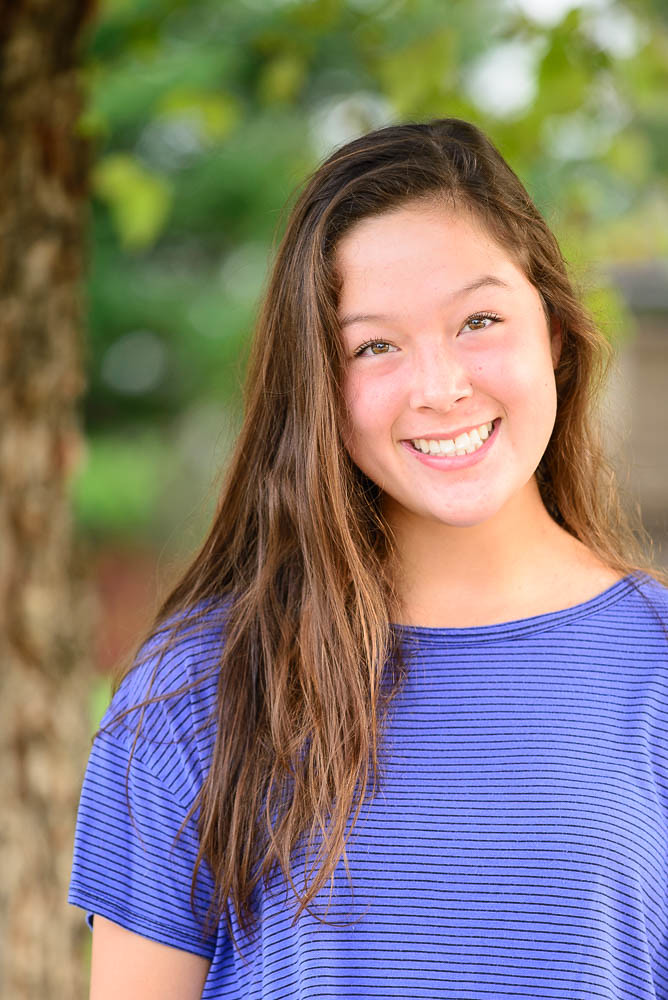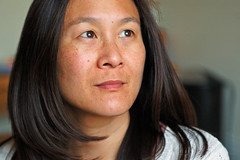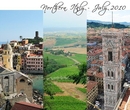Some Nanchang History and Sites
Saturday morning marks the solo portion of my visit here. Fortunately, I have a host today, Lily, who also works at the Cabot facility. Her Chinese name is XiaoHua, which means ‘small flower’, and that is why she has chosen Lily as her western name. But I’ll call her XiaoHua. I learn that she has a degree in Information Technology, from the Nanchang University and that she has worked at Cabot for a little over a year. I took her picture while we were visiting the Shengjin Pagoda:
I had mentioned to one of the engineers at the plant that I wanted to go to a museum, so that is what XiaoHua has planned for me this morning. We take a taxi to the Nanchang Museum – which documents two thousand years of Nanchang’s history. Yet unlike the Tengwang Pavillion, this facility is empty except for XiaoHua and me.
The most useful portion of the museum is this plaque which describes a bit of Nanchang’s significance in China – if you blow up the picture, you can read the entire text. Nanchang’s role in the Chinese Revolution – the Nanchang Uprising. I looked up some more information around this online and found this entry in Wikipedia:
The Nanchang Uprising (Nánchāng Qǐyì) (August 1, 1927) was the first major Kuomintang-Communist engagement of the Chinese Civil War. Communist forces in Nanchang rebelled under the leadership of He Long and Zhou Enlai attempting to seize control of the city after the end of the first Kuomintang-Communist alliance.
Other important leaders are Zhu De, Ye Ting, Liu Bocheng.
Communist forces occupied Nanchang successfully and escaped from the siege of Kuomintang forces at August 5, withdrawing to the Jinggang Mountains of
western Jiangxi. The day of August 1st is later regarded as the anniversary of the founding of the People's Liberation Army. It is regarded as the first gun against KMT.

Next stop is the Shengjin Pagoda. This is the second main ancient structure in Nanchang, the other structure being the previously visited Tengwang Pavilion (and unlike the Tengwang Pavilion, the pagoda is more than 1000 years old). Here is some information on the Pagoda I found online at China Travel Guide:
Shengjin Pagoda is located on the Zhushi Street of Nanchang, it is the highest construction of the city. The simple and unsophisticated pagoda makes the ancient city more beautiful.
The Shengjin Pagoda was built in the years of Tianyou Period of Tang Dynasty, 904 to 907 AD. Though it is more than 1000 years old, its structure has been perfectly reserved.
The 59 meters high pagoda has seven floors. It is made up of bricks and woods. Looking from outside, it has eight angles. Each floor has sharp angle eaves and eight doors. Inside the pagoda, there is a rotary stair going to the top.
Climbing up the pagoda and looking into the distance, you can see the Ganjing River with smoke flying above and the ancient city Nanchang with luxuriant trees. The pagoda and the Price Teng's Pavilion are standing opposite to each other at a distance in the city.
Near the Shengjin Pagoda, there is a Shengjin Temple with an ancient name Tianfo Compound. People also call it Taxia Temple. The temple and the pagoda were built at the same time. In the front of the temple, there is a moon-like pond.

XiaoHua and I make our way up the steep steps to the very top of the pagoda, where vast views of the city can be taken in. Unlike previous days, today is cooler – still in the mid-80s, but far more bearable, especially with the light breeze at the top.


We also briefly visit the Shengjin temple, whose entryway is guarded several dragon pillars.

We lunch at a restaurant called “Jia Chang Fan”, which directly translates to “Family Chang Restaurant”. The interesting thing about the “Chang” part is that the Chinese character is the same as my Chinese last name – and I am told that my Chinese last name is highly unusual. It literally translates to “long” or “always”. I’ll have to find a .jpg representation of the symbol somewhere……
XiaoHua orders way too much food – a nice fish steamed with a sweet-salty sauce with peanuts, a broccoli dish, a soup and a plate of lotus bean pastries. All of this for 60 Yuan, which is about $6.00 US.
After lunch, we do a little bit of shopping before heading to the Ba Yi Square to view the monument and enormous fountain.

Ba Yi translates to “eight – one”, undoubtedly referring to the August 1 Nanchang uprising. If you look at the first two characters on the monument, they are the Chinese characters for ‘eight’ and ‘one’. The August 1, 1927 date is also inscribed on the base. Unfortunately, it has started to rain, so we cut our visit short. The original plan is to come back at night when the fountain is illuminated by lights. But as you shall see, this never happens. More later………….






